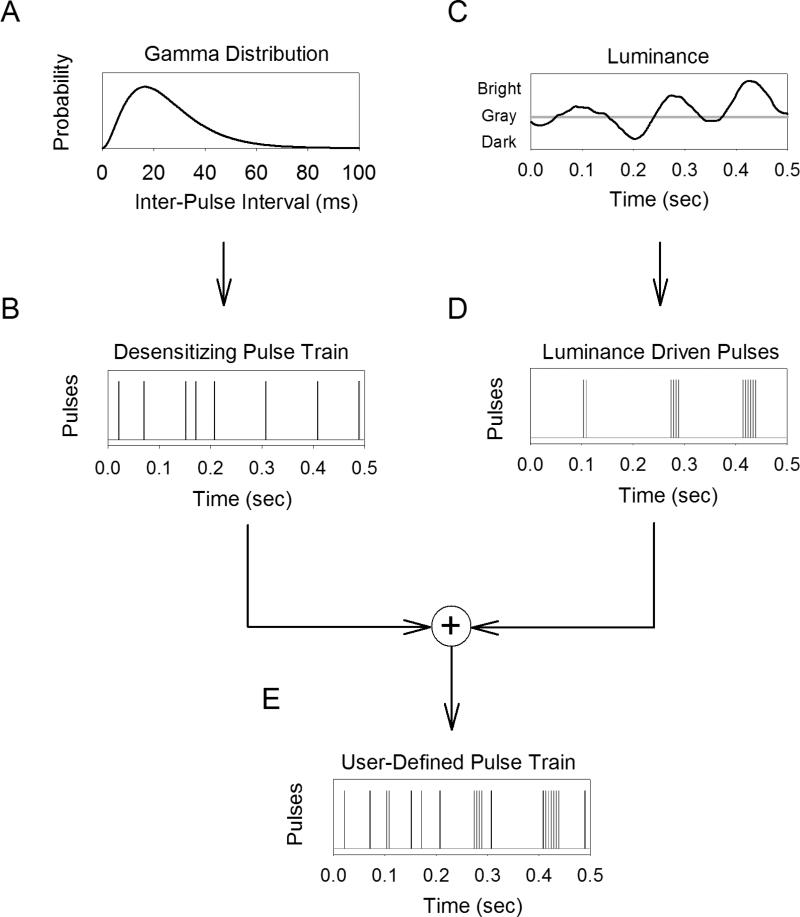Figure 10.
A stimulation strategy consisting of a train of 1ms pulses that cause desensitization (A-B) combined with bursts of short-duration pulses that encode luminance fluctuations (C-D). The purpose of the desensitizing pulse train is to attenuate or abolish the synaptically mediated response and it is delivered independent of luminance. Fluctuations in luminance are encoded in ganglion cell firing rate by delivering bursts of short-duration pulses when the luminance exceeds some threshold (e.g. background light level). The 1ms pulses elicit one-spike-per-pulse through direct activation, and this can be used to replicate the spontaneous discharge characteristics of ganglion cells (i.e. following gamma distributed inter-spike intervals). These pulses elicit one-spike-per-pulse through direct activation, where brightness level is encoded by increasing the number of pulses per burst. The result is a user-defined pulse train that is the sum of both the desensitizing pulse train and luminance-driven pulses (E).

